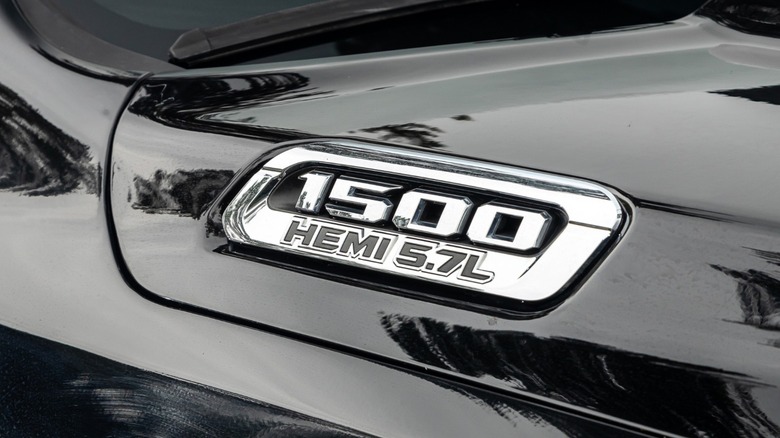What Does An MDS Solenoid Do For A 5.7 HEMI? Here's What You Need To Know
The Chrysler HEMI engine has long held a special place in the hearts of car people. Since the automaker's first HEMI engine rolled off the lot in 1951, the unique motor has fascinated and thrilled gearheads and auto lovers. The HEMI is loved for both its stock speed and torque outputs and its potential to make even more power with a few modifications. However, there is one part of these engines that has been known to cause controversy among much of the community: the Multiple Displacement System (MDS).
Not all Chrysler vehicles with the 5.7-liter HEMI engine have MDS. Most of them do, though, and if you drive a 5.7 HEMI-powered vehicle built after 2005, chances are yours has a Multiple Displacement System under the hood. MDS is designed to help improve fuel economy, but the way it achieves this is somewhat confusing. The system allows your V8 HEMI engine to effectively become a four-cylinder motor at certain times — like when the engine is under low load or running at low RPM — meaning that when the MDS is active, your car is running on only half of the engine.
It achieves this feat thanks to a series of solenoids installed beneath the intake manifold on either side of the camshaft valley. These solenoids work with your car's electronic control module (ECM) to control the activation and deactivation of the MDS. But it's a little bit more complicated than that, as these solenoids are part of a complex system designed to save you gas and reduce your vehicle's emissions. Let's check it out in greater detail.
The MDS solenoids in your 5.7 HEMI help conserve fuel
Chrysler HEMI engines with MDS each contain four solenoids. You can find them bolted into the cylinder head beneath the air intake manifold. The solenoids receive signals from the car's ECM when the engine is under low load like when cruising at a steady speed on the highway. For large engines like the 5.7L HEMI V8, highway driving like that requires a fraction of the motor's full potential power, meaning that the engine's throttle is barely open in those situations.
On the other hand, a smaller four-cylinder motor needs much more air to cruise at those higher speeds, which means its throttle will have to open wider. Smaller motors consume less fuel, but also require more air to reach the combustion chambers in order to produce equivalent amounts of power. That's pretty much the point of MDS: to give you an engine that's not only capable of doing things like towing heavy loads or tearing up the drag strip, but one that can also turn into a fuel-efficient four-banger when you don't need all that extra power.
The MDS solenoids' job is to deactivate the valves while still allowing the lifters to move with the camshaft. The confusing part is that, even though no fuel is sent to the deactivated cylinders, more fuel is sent to the remaining four to prevent power loss. The savings in fuel actually comes from the fact that the motor's throttle must be open much wider to make up for the four dormant pistons. When the throttle is more open, the engine doesn't have to work as hard, which translates to a fuel savings of around 20%.

